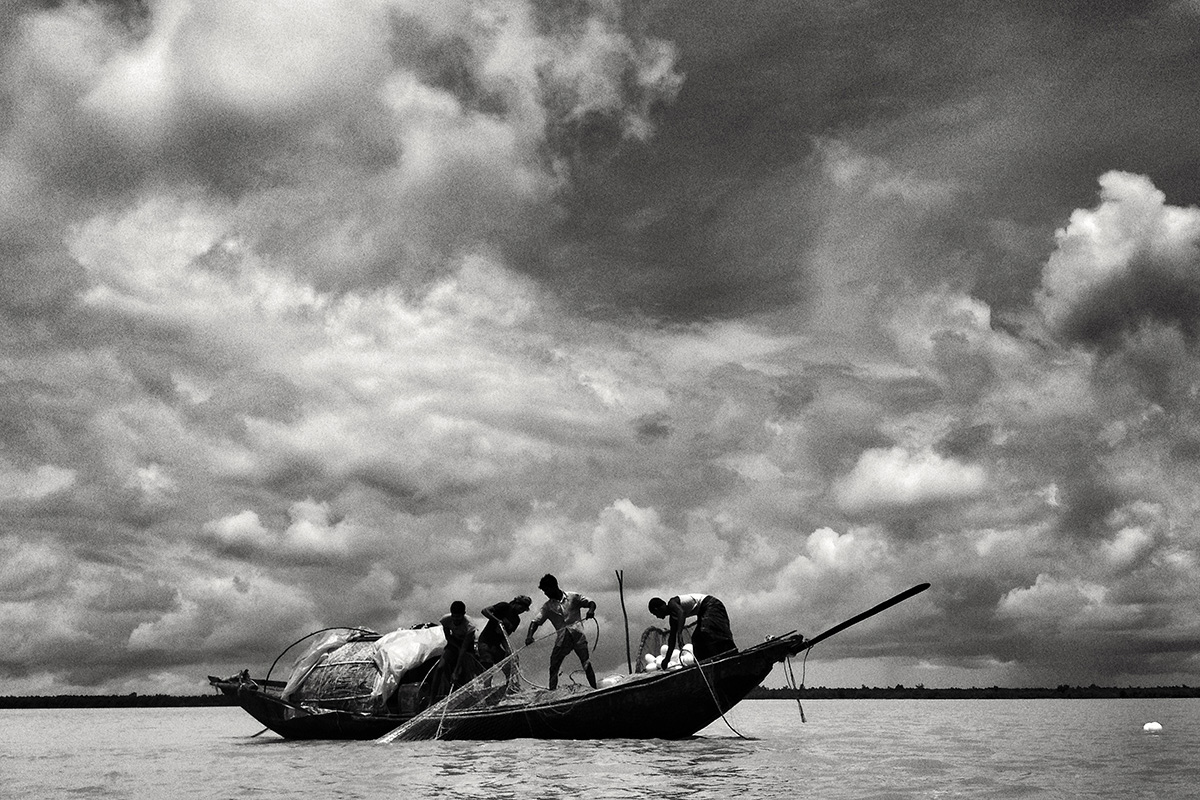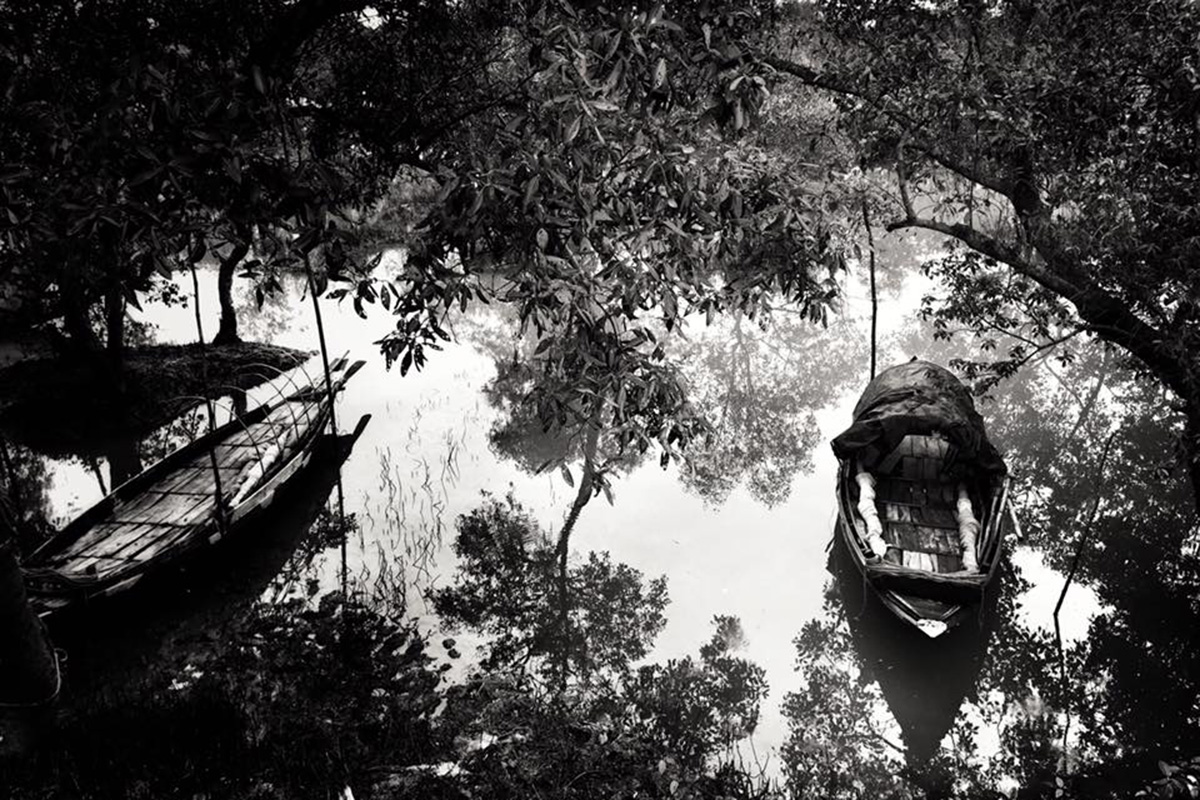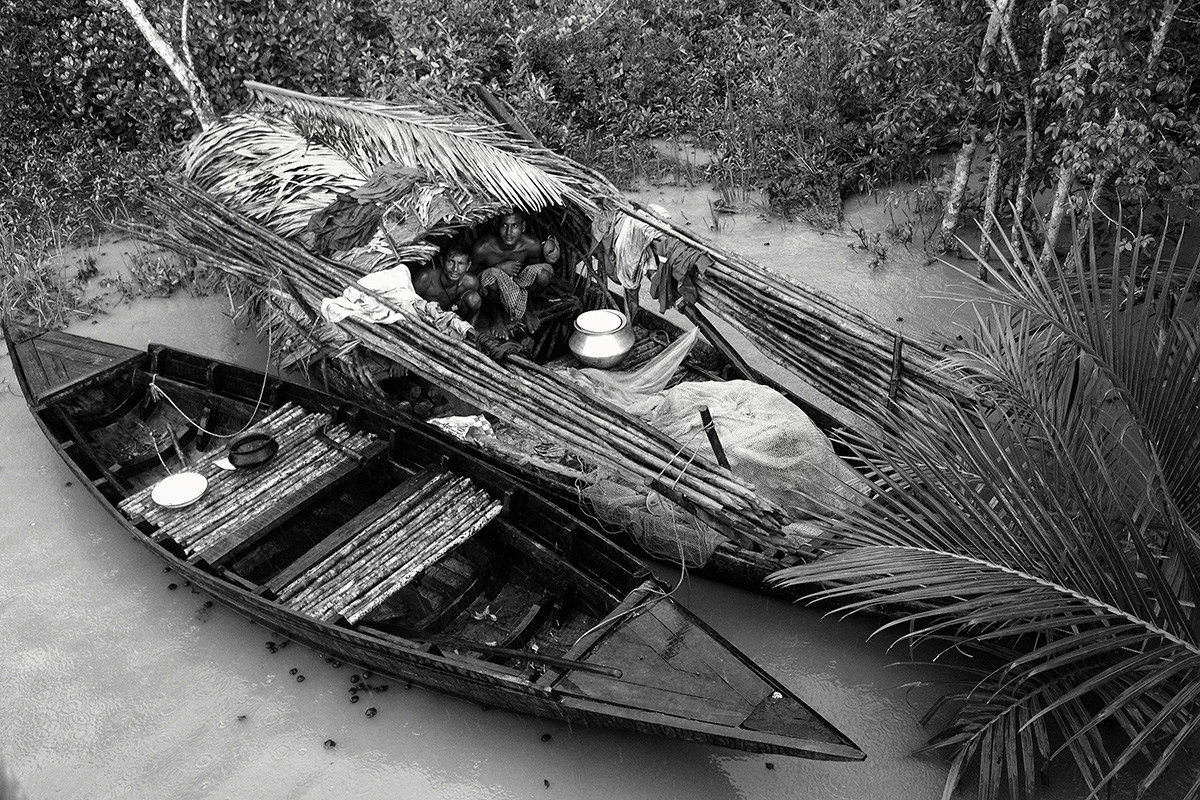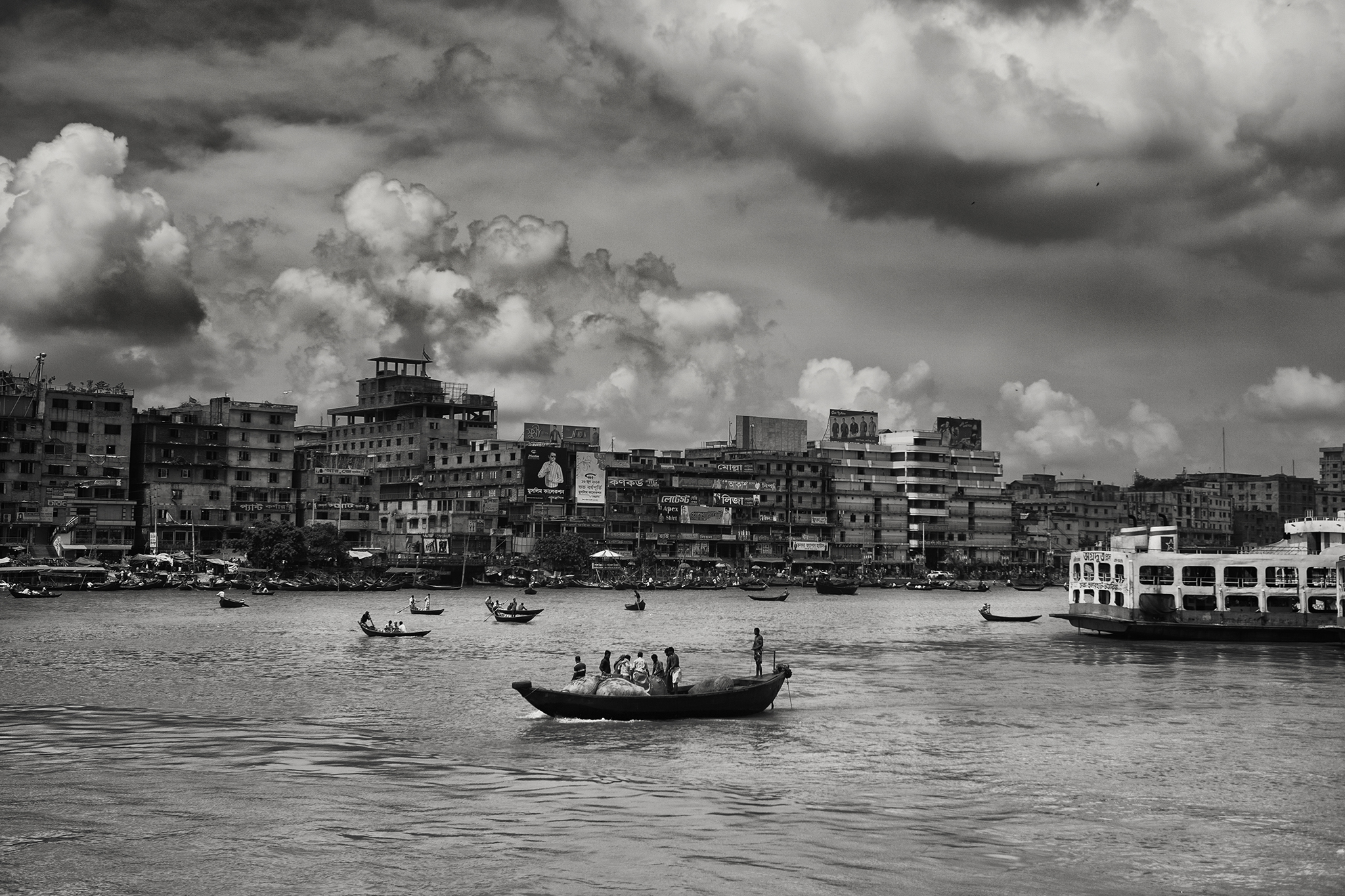
Over half a million fishers depend upon the Sundarbans for livelihood - they include fishers, crab-catchers, honey-hunters, prawn-seed collectors, and woodcutters.

The mangrove forests of the Sundarbans are among the most productive ecosystems in the world. They are incredibly biodiverse and rich in species of both ecological and economic importance

This long-line fisherman will spend ten days on the boat, in the forest, braving tigers and crocodiles, to make a meager living. Most of these small artisanal fishers make less than $1 a day.

These two shrimp fishermen were huddled in a palm cove out of sight. “The pirates came last night. They began to beat up my brother. We begged them to let him go. They did, but they took our trawler. Now we have five days to come up with 5,000 Taka (about $65).” What might seem like a small sum to us is an insurmountable obstacle to fishermen who barely make $1 a day.

A son of a hilsa fisherman huddles inside a boat away from the rain, waiting for his father to return. Pirates had kidnapped him and held him for nine days. Did he have a chance to escape? “I was on a boat, where would I escape to? No, it is best to wait out these kidnappings.” They fed him once in two days, he said. On the appointed day, he was returned to his parents for 20,000 Taka (about $255) in ransom.

Artisanal fishing is becoming a near unviable livelihood throughout the Ganga-Brahmaputra basin. With few other local options for earning income, fishers are increasingly migrating in search of daily wage work which is impermanent and insufficient to make ends meet.

This dock usually sees hundreds of boats in the hilsa fishing season. The year this was taken (2014) was the worst fishing season in 35 years, the locals said.

The Sundarbans fight in the frontline of the defense against climate change, acting as a buffer for the storm surges and cyclones thrown at Bangaldesh and West Bengal by the Bay of Bengal.

Khulna, the first big city north of the Sundarbans in Bangladesh, is billed as the city in danger of losing the most as a percentage of GDP to the effects of climate change.









Over half a million fishers depend upon the Sundarbans for livelihood - they include fishers, crab-catchers, honey-hunters, prawn-seed collectors, and woodcutters.
The mangrove forests of the Sundarbans are among the most productive ecosystems in the world. They are incredibly biodiverse and rich in species of both ecological and economic importance
This long-line fisherman will spend ten days on the boat, in the forest, braving tigers and crocodiles, to make a meager living. Most of these small artisanal fishers make less than $1 a day.
These two shrimp fishermen were huddled in a palm cove out of sight. “The pirates came last night. They began to beat up my brother. We begged them to let him go. They did, but they took our trawler. Now we have five days to come up with 5,000 Taka (about $65).” What might seem like a small sum to us is an insurmountable obstacle to fishermen who barely make $1 a day.
A son of a hilsa fisherman huddles inside a boat away from the rain, waiting for his father to return. Pirates had kidnapped him and held him for nine days. Did he have a chance to escape? “I was on a boat, where would I escape to? No, it is best to wait out these kidnappings.” They fed him once in two days, he said. On the appointed day, he was returned to his parents for 20,000 Taka (about $255) in ransom.
Artisanal fishing is becoming a near unviable livelihood throughout the Ganga-Brahmaputra basin. With few other local options for earning income, fishers are increasingly migrating in search of daily wage work which is impermanent and insufficient to make ends meet.
This dock usually sees hundreds of boats in the hilsa fishing season. The year this was taken (2014) was the worst fishing season in 35 years, the locals said.
The Sundarbans fight in the frontline of the defense against climate change, acting as a buffer for the storm surges and cyclones thrown at Bangaldesh and West Bengal by the Bay of Bengal.
Khulna, the first big city north of the Sundarbans in Bangladesh, is billed as the city in danger of losing the most as a percentage of GDP to the effects of climate change.